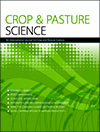CP21732Random regression models for multi-environment, multi-time data from crop breeding selection trials
We present a novel approach for statistical analysis of data across multi-environment trials at multiple times for crop variety selection (e.g. harvests in perennial crop trials, high-throughput phenotyping at different growth stages in annual crops). The approach models the random genetic effects over times and environments, using cubic smoothing splines and random regressions while incorporating spatial and temporal correlation between observations. The approach is illustrated on a set of six wheat genotype experiments investigating grain-filling.
CP21732 Abstract | CP21732 Full Text | CP21732PDF (2 MB) | CP21732Supplementary Material (393 KB) Open Access Article





